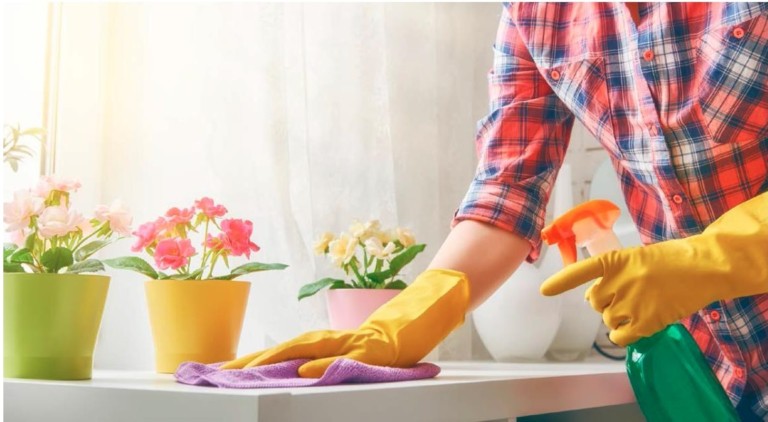While you are unlikely to run around your house in an apron happily swiping at dust with a quaint feather duster, you probably do have to worry about dust removal. In fact, Americans spend over $10 billion a year on dust removal products. Add in vacuum cleaners, air filters, furnace filters and so forth and it is easy to see that household dust is big business. But have you ever wondered what is in household dust? Is it just a nuisance or are there health concerns? When it comes to your home looking good and being clean dust is serious business.
The Dangers of Dust
Household dust contains all sorts of things from the outside atmosphere including dust from volcanic eruptions, forest fires, disintegrating meteors, silica, mica, clay and other minerals from wind erosion. Other constituents of dust come from inside the house including human and animal hairs, paper fiber, dead skin, deteriorating paint particles, ash and soot from fireplaces, candles, stoves and furnaces; sugars, starches, salt, crumbs and other food particles.
Some particles are of concern to humans, especially allergy sufferers: pollen, air pollution, pet dander, mold spores, dead insects, dust mites and their waste. There is growing concern about residues from pesticides, herbicides and fertilizers used both inside and outside our homes. Even roadway dust from automobile tires, brake linings and exhaust becomes household dust, and may contain carcinogens. There’s also dust from construction, demolition and deterioration of buildings.
The list goes on and on. In fact, you might just say almost everything you look at is turning to dust. Needless to say, there is no way to make your home completely dust free. But preventing the buildup of dust will make your home a healthier place to live. The good news is dust control doesn’t have to be difficult. It’s just a matter of changing the way you do a few things.
Following these easy tips will significantly improve your air quality:
- While it is nice to let the fresh air in, keep windows and doors closed when pollen is high or it is windy outside.
- Brush pets outdoors away from the house and use a damp pet wipe to remove remaining dander before allowing them back into the house.
- When cleaning around the house, do your dusting with an electrostatic cloth, duster or damp wipe so you are picking up and removing dust, not just pushing it around.
- When dusting, work from high to low areas and work your way out of the room. Wait about an hour to allow the particles to settle before vacuuming.
- Vacuuming is a great way to remove dust. However, it is important to use a vacuum cleaner with an efficient filter system. A vacuum with High Efficiency Particulate Air (HEPA) filtration improves air quality while you vacuum.
- Don’t forget to vacuum your furniture too.
- Install a high efficiency filter on your HVAC system and replace it monthly. For added protection, there are air purifiers designed to be attached to your duct system. Generally, these units require professional installation by a licensed contractor but they can be worth the cost if you have allergy sufferers in the home.
- When dust becomes bonded to carpet and upholstery fibers by sticky or oily residues it’s time for professional cleaning. Call Bluegreen every 6 to 12 months to keep dust from building up deep in your carpet fibers or your favorite chair.
